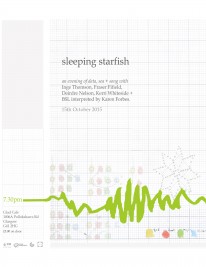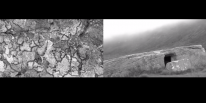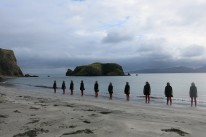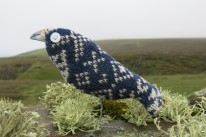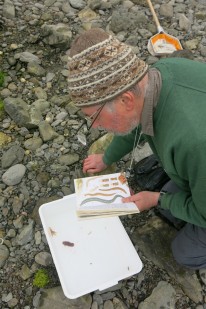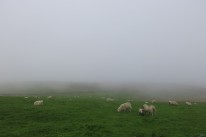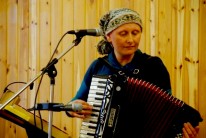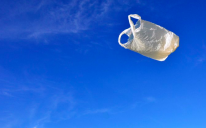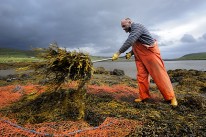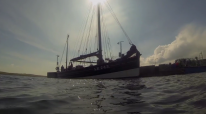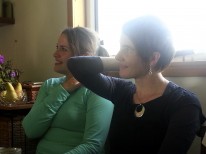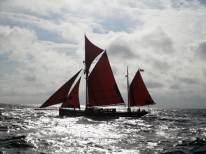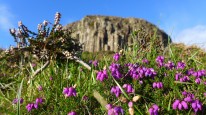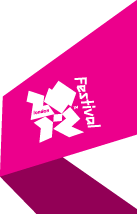Sexy Peat/Tìr mo Rùin
Artist Diary 18 October - Jon Macleod. Territory – Dùthaich
I have started writing this moor blog whilst on a residency in St.Kilda. It seems that both these places have become defined by the notion of remoteness and as such are comparable. Also the language, culture and archaeology of both are largely shared.
To fully experience both St. Kilda and the Moor it is necessary to make a sometimes arduous journey across a terrain that to the untrained eye is inhospitable, featureless, hostile, a landscape where seemingly humans do not belong.
But as the stories, songs and folk memory attest this is not the case.
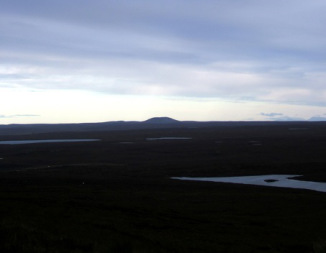
Towards Muineag
Many of the Gaelic blessings collected by the folklorist Alexander Carmichael relate to the moor. The language welds Christian and perhaps more ancient beliefs into the ritualistic nature of everyday tasks such as milking, herding, lighting and the smooring of fires.
‘Peat is the fuel of the Highlands and islands. Where wood is not obtainable the fire is kept in during the night. The process by which this is accomplished is called in Gaelic smaladh; in Scottish smooring; and in English, smothering, or more correctly, subduing. The ceremony of smooring the fire is artistic and symbolic and is performed with loving care.
The embers are evenly spread on the hearth which is generally in the middle of the floor and formed into a circle. This circle is then divided into three equal sections, a small boss being left in the middle. A peat is laid between each section, each peat touching the boss, which forms a common centre. The first peat is laid down in name of the God of Life, the second in name of the God of Peace, the third in name of the God of Grace. The circle is then covered over with ashes sufficient to subdue but not to extinguish the fire, in name of The Three of Light. The heap slightly raised in the centre is called ‘Tula nan Tri’ the Heart of Three.
When the smooring operation is complete the woman closes her eyes, stretches her hand and softly intones one of the many formulae current for these occasions.’
I will build the hearth
As Mary would build it
The encompassment of Bride and of Mary
Guarding the hearth guarding the floor
Guarding the household all
Who are they on the lawn without
Michael the sun radiant of my trust
Who are they on the middle of the floor
John and Peter and Paul
Who are they by the front of my bed
Sun bright Mary and her son
The mouth of God ordained
The angel of God proclaimed
An Angel white in charge of the hearth
Till white day shall come to the embers
An angel white in charge of the hearth
Till white day shall come to the embers
(Alexander Carmichael- Carmina Gadelica Volume 2 – 1900)
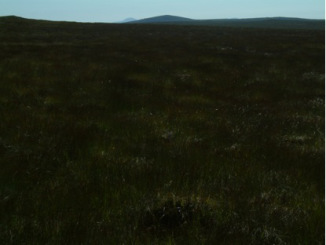
Near Loch an Duine
January – Setting off after warmth of the sun has gone. Skirting Loch an Tobair – a fenced off Sùil- Chruthaich approaching the breunlachan of loch Tana. Sending ducks to flight.
Dusk – a woodcock and a shrew illuminated in the headlights
Hail storms – losing sight of the road. Blurred shieling like a childs’ drawing. Net curtains and falling snow
It helps to try and cultivate what you could call an ‘ indigenous eye’ in places such as the moor
In doing this a landscape that can seem empty becomes full. Sometimes so full that your path is delayed with small observations, incidents with birds and animals, smells and sounds.
‘Hunting in my experience – and by hunting I simply mean being out on the land is a state of mind. All of ones faculties are brought to bare in an effort to become fully incorporated into the landscape. It is more than listening for animals or watching for hoofprints or a shift in the weather. It is more than an analysis of what one senses. To hunt means to have the land around you like clothing. To engage in a wordless dialogue with it , one so absorbing that you cease to talk with your human companions. It means to release yourself from rational images of what something ‘means’. ‘
(Barry Lopez – Arctic Dreams)

Red deer near Beinn Mhaol Stacaiseal looking South
Thinking about the deer and their linguistic connection with the moor.
The Gaelic for deer – Fiadh
The Gaelic for a wild untamed place – Fiadhaich
February – Visiting shielings around Loch Beag Thoma Duibhe, between Tomanach dhubh and Druim Gil Speireag the ground underfoot as mossy as a Finnish forest
Sheep hoof seraphs in the powdery scratch card covering of snow
A moulting Eagle a few feet above the car gliding

Red deer near Stacaiseal
Observing some of the elements of being out in the moor and inspired by Dr.Johnsons ‘Seventeen meanings for the word line’ in 1775, I made a collection of Lines – a Taxonomy of moorland lines.
Included are the lines of ‘crazing’ in the pottery I have found in moorland lochs. Next to each Staran (a line of stones set out going into a loch for collecting water for a nearby shieling) there is often a scatter of shards of decorated pottery. Crockery taken out to the airigh. Even in the most remote of locations brightly patterned pieces of china glint through the peaty water.
This is the same style of pottery displayed in the museum in St.Kilda.


Pottery shards from Loch nan Cnàmh
A Taxonomy of Moorland lines
Deer skull suture line- river meanders in the Bughachan – the high water strand line of a loch – lochan ice line – herring bone design on bronze age pottery or in a peat stack- sheep ear marks – deer paths – Pentland road – map contour line – rush growth lines – crazed glaze on found pottery-
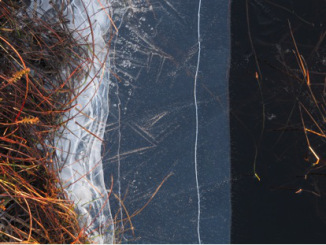
Lochan ice line
March – Half moon – looking beyond the shadow cast by Stacaiseal to the Inner Moor. A downy Eagle feather – a Golden Plover feather – the dead flower stalks of Bog Asphodel. Slicks of ice amongst the deer grass
The Lochs and allts like the organs and arteries of an animal – an Inuit drawing

Swan feather – beyond Stacaiseal
After making a list of lines I made another list about what is often overlooked by academics in describing the human element to St.Kilda or the moor.
Playfullness
Sense of colour
Humour
Trials of strength and agility
Powers of imitation
Wonder in the natural world
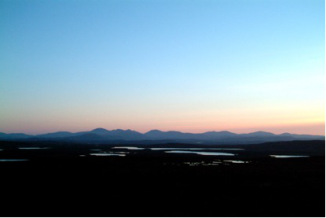
Moor towards Harris
April – The ribbon like strip of undulating (floating) road the only modern impingement on the natural integrity of the open moor. A hairline avenue from which to view the expanse.
Feadan – veins – the moor a living thing
Skirting Loch Gainmeach eitseal Bheag – snipe alighting – past Creagan na criche and along Abhainn na Bà Mòire – three Whooper swans uptailing on Loch Mòr a Chocair
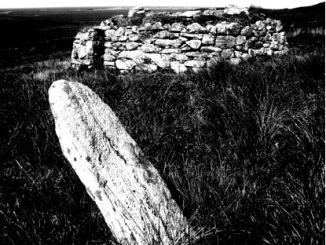
Shieling and Clach Tacais – Barvas moor

Midsummer near Druim na Each Geal

Loch Tana
May – Mountain Everlasting (Spog Cat in Gaelic – Cats’ paw) in flower growing in a crevice on Grianan – resounding to cuckoos
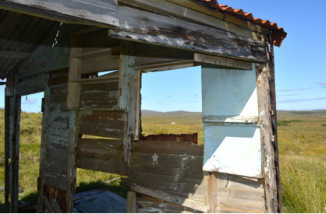
Shieling towards Achmore
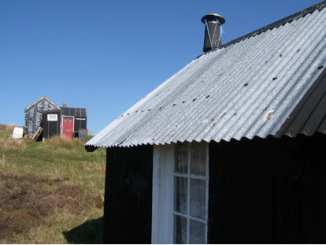
Cuishader shielings
June – Still warm night- cuckoo calling – distant gulls above the fir tops
The panoply of hills stretching back from a ripple of Lochs and moor – tormentil in flower – sedges dusting pollen

Grouse chick

Scarecrow at the Barvas river
July – Walking to Loch an Laoigh the fringes bejewelled with sundew – milkwort – lousewort
To Loch nan Cnàmh – tracks of a swan – small birds and a hare at Loch airigh nan Sloc. A finger tip of Pippit shell – a suture wind of burn between the two lochs – a piping of Dunlins gliding en masse between tomanan.

Pentland Road shieling

Red grouse and antler at Loch nam Cnàmh
August – The moor hooching with frogs – a damp sultry day
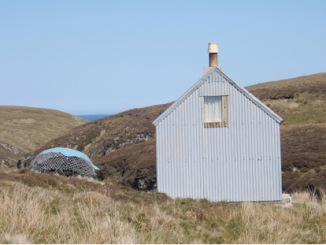
Cuishader shieling and peat stack
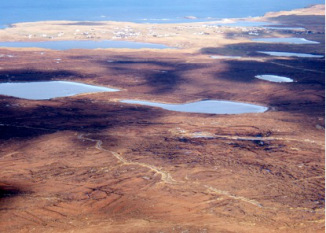
Rionnach maoim and peat roads -Looking towards Bragar and Arnol from Beinn Bragar
September – Between the curtains at night the mast at Eitseal the only light in the dark mass of the moor
The Pentland road awash with young grouse.

Golden eagle at Loch nam Cnàmh

Bus shieling Cuishader
Jon Macleod, October 2013
© All photos copyright Jon Macleod

